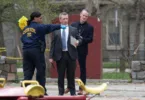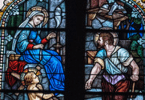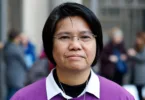
by Russell Shaw
Two vast upheavals in the Catholic Church in the past 60 years spurred a dramatic transformation of Catholic News Service — from a news agency with a house organ mentality to one committing to reporting facts, even embarrassing ones concerning the church itself.
The first upheaval was the Second Vatican Council. From a shaky start in 1962, which the council attempting to operate semi-secrecy, it did an about-face, opened up, and by its end in 1965 was a model of openness. This was a lesson not lost on Catholic media, notably including CNS.
The second upheaval was the crisis of sex abuse and cover-up in the church, a scandal in which the bitter fruits of secrecy were obvious. Faced with the challenge implicit in disclosures of serious misconduct by some Catholic priests and its concealment by some bishops, CNS and other Catholic media have reported copiously and candidly, neither exaggerating the wrongdoing nor making excuses for it.
In sum, CNS today is a news organization hugely different in many ways from the one I found when I worked there as a journalistic novice from 1957 to 1966.
Back in 1957 the NCWC — for National Catholic Welfare Conference — News Service, as it was called then, had a core group of solid professional journalists and did important work on behalf of the church. But it operated under the cloud of censorship.
Partly that was self-censorship by editors and reporters all too aware that they couldn’t get away with reporting anything that ran afoul of the policy of NCWC, the predecessor of today’s U.S. Conference of Catholic Bishops. And partly it was the external censorship involved in getting particular stories approved — or sometimes having them killed — by other NCWC offices or the organization’s general secretary.
Then came Vatican II. Council managers tried at first to keep things under wraps, but leaks to the media blew the lid of secrecy to smithereens and moved the council to open up to the media and the world.
Unsurprisingly, Vatican II’s candor spread rapidly elsewhere in the church. In 1971, the U.S. bishops set a new standard for episcopal openness and coverage of the proceedings (still unmatched by most other bishops’ conferences around the world) by allowing journalists to observe and report on their semiannual general meetings.
In particular, the news service’s Rome bureau produced the three-volume Vatican Day Books.
As the environment in which it operated changed, so did the news service. In this new atmosphere of openness, it shed its house organ mentality and the accompanying habits of censorship, and began operating as a free, objective news organization.
Of course there were some rough spots at first, but the new way doing things quickly took hold. And that proved highly fortunate — not just for CNS but for the church at large — when the scandal of clergy sex abuse and cover-up erupted nationally in 2002.
Even before that, though, CNS was covering the issue; the news service’s archives have over 200 articles about clergy sex abuse dating from the early 1990s.
Since the national spotlight was shined on abuse, CNS and the Catholic press as a whole have covered this immensely painful ongoing story with dogged determination born of the conviction that the Catholic community is best served by truthfulness. The result has been, and remains, an indispensable service to the church at a time when some other media have sensationalized their coverage of the scandal and misrepresented the dimensions of the problem.
In “Nothing To Hide,” a book on the abuse of secrecy in the church published in 2008, I made the obvious point that failures of communication in the church “must be overcome, not multiplied by concealment and dissimulation.”
“The church’s failings are our failings. When we speak of reforming the church by honest, open communication and accountability, we are speaking of reforming ourselves,” I added.
The remarkable transformation of CNS has shown this is not a pipe dream but a real possibility. May others within the structure of the church do likewise.






